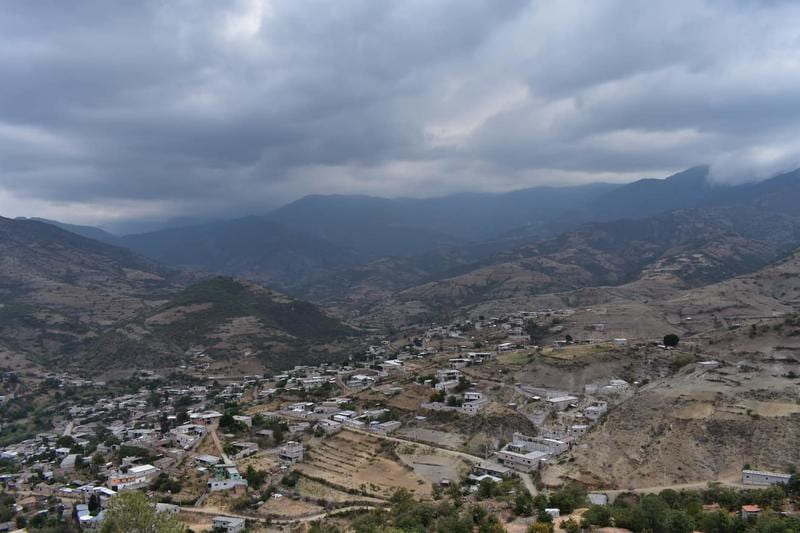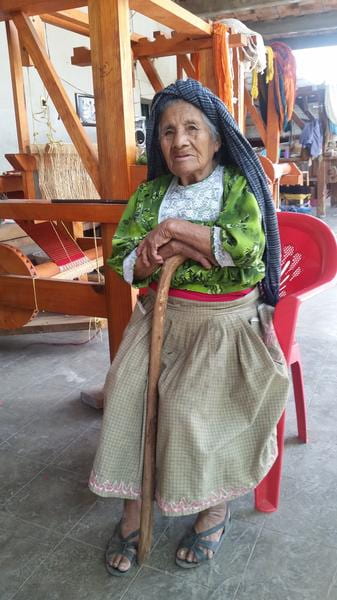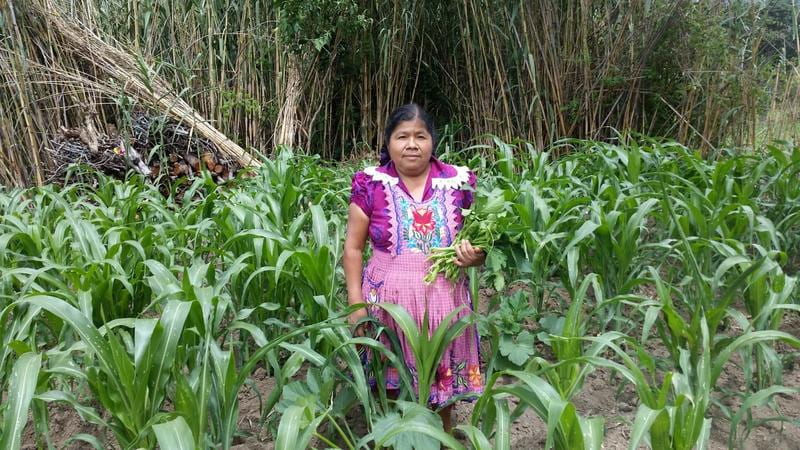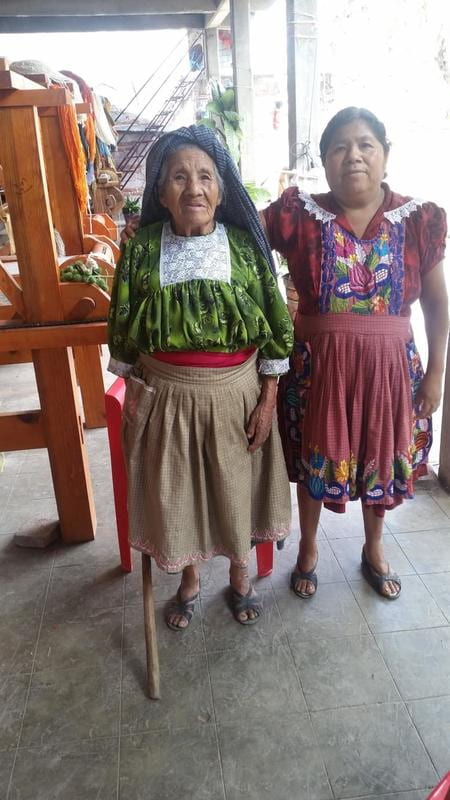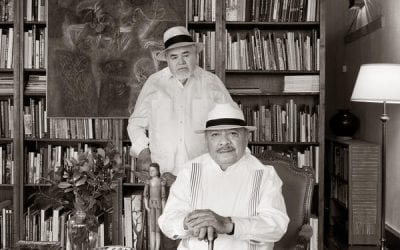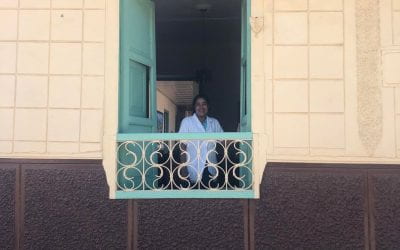A Story of Agricultural Change
Antes, la vida era puro rancho
Francisca Hernández García, 92, lives in San Miguel del Valle, a town of around 3,000 inhabitants in the Central Valleys of Oaxaca, an hour east of the capital city. She is one of the few remaining residents of San Miguel who speaks only Zapotec—el zapoteco antiguo, the old Zapotec, without the borrowed words form Spanish that are now common—and does not speak any Spanish. She wears a skirt and refajo rather than the elaborately embroidered dresses that virtually all women in the community wear today. Though nearly blind, she still washes the dishes, washes her own clothes, and even goes to the fields to plant maize. I spent many hours with Francisca and her daughter, Feliciana, at Feliciana’s home in the center of town. Sitting in her spacious patio, next to the family’s several looms in front of a giant chayote bush, Francisca would show up in the doorway with her wooden cane, pull up a chair, and join us.
During the summer of 2018, I was living in San Miguel del Valle to do fieldwork for my senior thesis on maize agriculture, funded in part by a DRCLAS grant. I began spending time there when I was just 18, as I sought more opportunities to practice the Zapotec I was studying in a nearby town. Over the course of several years I built friendships with a few families in San Miguel, and returned for more extensive visits in winter 2017 and summer 2018 to do fieldwork. I had met Feliciana’s family earlier in San Miguel but I only began spending extensive time with her and her family during my research period in summer 2018. One day in June 2018, Feliciana brought me to meet her mother in her home, where she lives with Feliciana’s brother. I talked with her in Zapotec as best I could. Most frequently, though, we would meet in Feliciana’s home. Most days, four generations coexist in Feliciana’s household as her family members, including her many grandchildren and mother, stop by throughout the day.
Feliciana spoke with pride about her mother’s health. “Es por lo que come,” she explained over and over. “Come simple, come puro naural… como antes.” It’s because of what she eats, observed Feliciana—all natural, fresh food like they ate before.
During my field work in San Miguel on maize agriculture, I heard again and again about como era la vida antes—how life was before. Just a few generations ago, nearly everyone in San Miguel lived on isolated ranchos, scattered throughout the hills behind San Miguel. What is now the center of town had just a few homes. Agriculture dominated life. Feliciana and her husband would talk for hours about how things were before, en el rancho. I heard a story of drastic change over the past few generations. People talked about this antes to describe a set of changes that they viewed as particularly significant and powerful in the community— changes in agriculture, diet and economic systems that have accelerated drastically in the past few generations.
Feliciana was born on one of these isolated ranchos, located high above the town, up and over one of the mountains that rises behind the town. Francisca spent most of her life living here. She moved to the town a couple of decades ago, when her son no longer wanted to live in the rancho—he wanted to move to the center of town, where he could more easily weave and sell his woolen rugs. Feliciana was already married and living in the town. Many families now weave these distinctive wool rugs, which are produced only in a few towns in the region. They sell their rugs to businesses in the neighboring town of Teotitlan, where they are resold at much higher prices to tourists. But before, residents wove only thick wool blankets for their own use, and there were no sources of income besides the small amounts of money residents earned from selling their excess agricultural produce—enough to cover only the few foods they could not produce themselves, like sugar and salt.
I had decided to study maize agriculture in San Miguel because I was interested in the ways the community maintained an identity centered around agriculture even when it has become a secondary activity for much of the community. San Miguel is located in the driest part of the Central Valleys, and those that do persist in planting their milpa often lose their harvest to frequent droughts, exacerbated by climate change, in fields with no irrigation. Families still plant their native maize seeds exclusively; in part because they know that these are the only seeds that will grow in their rocky, dry, steep fields.
Most young men now leave San Miguel for years at a time to work in the United States. The money these migrants send back is made visible by the many large brick houses that tower over the entrance of town, many unfinished or uninhabited, the only material presence left of families living permanently in el norte. Many families also weave, embroider aprons and work in various other jobs in San Miguel and nearby towns. Agriculture has taken on secondary importance to alternative income sources; corn prices have fallen with the North American Trade Agreement (NAFTA), and San Miguel has become immersed in complex global economic and labor networks.
Trabajdux ru’ low ranch, tae’dy mïdy tï yu’ xí’ ido’nu… tyopzi xaba’ rzi xhana’… txi guka’ bitxi’n, tae’dy mïdy rzi’ xhana’ cuaderno, tae’dy mïdy rnae’ xkily tï go’w ni gawa’. “There was a lot of work on the ranch,” Feliciana told me in Zapotec. “There was no money to buy food to eat… my mother bought me only two dresses… when I was small, there was no money for my mother to buy me notebooks to go to school, no money for me to bring to school to buy food.” She added in Spanish, “No fui a la escuela tantos días porque no había dinero; ¿con qué dinero iba a comprar mi mamá cuadernos y lápiz?” “I didn’t go to school many days because there was no money, with what money was my mother going to buy me notebooks and a pencil?”
Now, no hay mucho trabajo, there is not a lot of work. But antes… en el rancho había de todo, y llovía mucho. Ahora, la tierra está triste. “On the ranch there was everything, and it rained a lot. Now, the earth is sad.” Feliciana attributes her mother’s good health to the purity of life in the mountains, and to the natural foods she ate. She still refuses to eat foods like cheese and pork, which were introduced only recently to the diet in San Miguel. Life might be easier now, but the food is not pure, people are not as healthy, and children are losing a sense of value for the food that they produce and have eaten for so long. The way in which people discuss this antes in San Miguel reflects a deep valorization of agriculture that goes beyond the economic. The monte still becomes alive with milpa every summer even though no one ever knows whether they will get a harvest.
Winter 2019, Volume XVIII, Number 2
Adele Woodmansee is a Kenneth I. Juster Fellow and joint concentrator in Integrative Biology and Social Anthropology at Harvard College. She received a DRCLAS research grant for her fieldwork in Oaxaca.
Related Articles
Video Interview with Flavia Piovesan
Flavia Piovesan is a member of the Inter-American Commission on Human Rights, Professor of Law at the Pontifical Catholic University of São Paulo and 2018 Lemann Visiting Scholar at the…
Aging: Editor’s Letter
There is no smell of pungent printers ink permeating my office. My interns—Sylvie, Isaac and Marc—are not scrambling to find FedEx boxes to send out ReVista issues to authors and photographers all over the world. I cannot feel the silken touch of the printed page…
Domestic Workers and Retirement
That day everyone was either crying or trying to hold back the tears. In the kitchen, Anita Tobon was crying too. Yet, Anita was crying very quietly as if her pain were insignificant or irrelevant…

